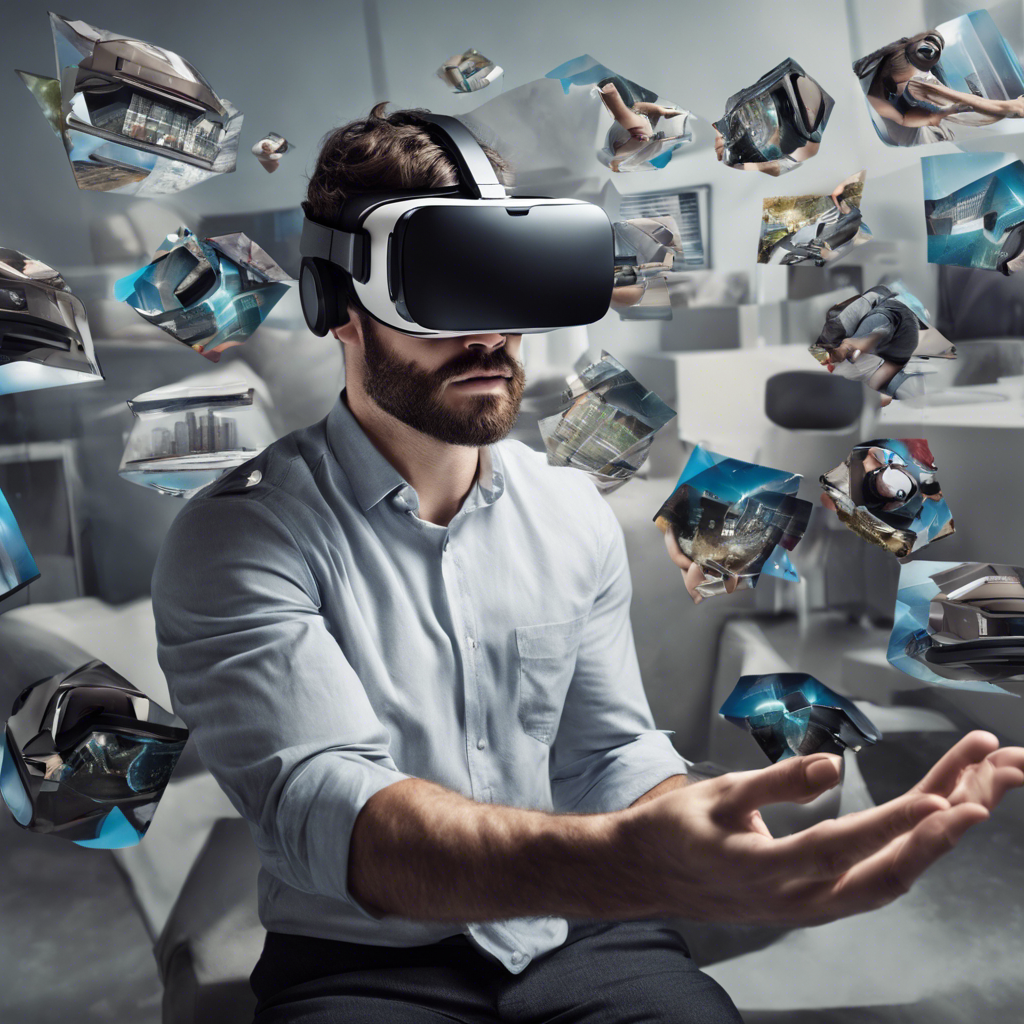Researchers from Northwestern University use virtual reality goggles on lab mice to study how neurons in the brain form memories.
In a groundbreaking development in the field of neurobiology, researchers at Northwestern University have created miniature virtual reality (VR) goggles for lab mice. These mice are being used to study the neurons in the brain responsible for memory formation. By observing how the mice remember navigational cues while navigating digital mazes, scientists hope to gain insights into human memory and how degenerative diseases affect the brain.
A New Tool for Neurobiology Research
The researchers, led by Professor Daniel Dombeck, developed the VR goggles to overcome the limitations of traditional imaging devices. The large, table-top devices used to image brain activity cannot be carried around on a mouse’s head as it moves through its environment. To address this, the researchers designed a setup where the mouse’s head is held still under a microscope, while the animal runs on a treadmill mounted under its limbs. The treadmill movements transport the mouse through a virtual world displayed in the goggles, allowing researchers to study brain activity during navigation.
Investigating Memory Formation
The main objective of the study is to identify the specific neurons in the brain that form memories. By examining these neurons, the researchers aim to understand the mechanisms by which memories are encoded and how synapses are modified during the process. The VR environment provides a controlled setting for studying brain activity during navigation, enabling the researchers to precisely analyze the neural processes involved in memory formation.
Mouse Research with Human Applications
While the study focuses on mice, the findings have broader implications for understanding human memory. The ability to navigate and remember spatial information is fundamental to our daily lives. By studying how mouse brains process navigational cues and form memories, researchers can gain insights into how the human brain performs similar functions. This knowledge could have implications for understanding human memory disorders and neurodegenerative diseases that affect memory.
Realistic Virtual Environments
The virtual environments created for the mice include twisting mazes and depictions of predators like owls. These realistic scenarios allow researchers to simulate real-world conditions and observe how the mice react. In some cases, a looming predator is added to the virtual environment, causing the mice to freeze or flee, mimicking their survival instincts in the wild. By studying how the navigation systems in the mouse brain respond to these stimuli, the researchers can gain a deeper understanding of how the brain processes information and how imagination emerges.
Future Directions
The current study represents an early stage in the use of VR goggles for studying memory formation in mice. The researchers plan to develop even smaller goggles that mice can carry around and use to navigate virtual mazes in the real world. This advancement will allow for a more naturalistic exploration of memory formation and navigation. By continuing to refine and expand this research, scientists hope to uncover new insights into the complexities of memory and its underlying neural mechanisms.
Conclusion:
The use of virtual reality goggles on lab mice represents a significant breakthrough in the field of neurobiology. By studying how these mice navigate virtual environments and form memories, researchers are gaining valuable insights into the mechanisms of memory formation in the brain. The findings from these studies have the potential to enhance our understanding of human memory and its disorders, as well as provide new avenues for research into neurodegenerative diseases. As technology continues to advance, virtual reality may prove to be an invaluable tool for unraveling the mysteries of the mind.











